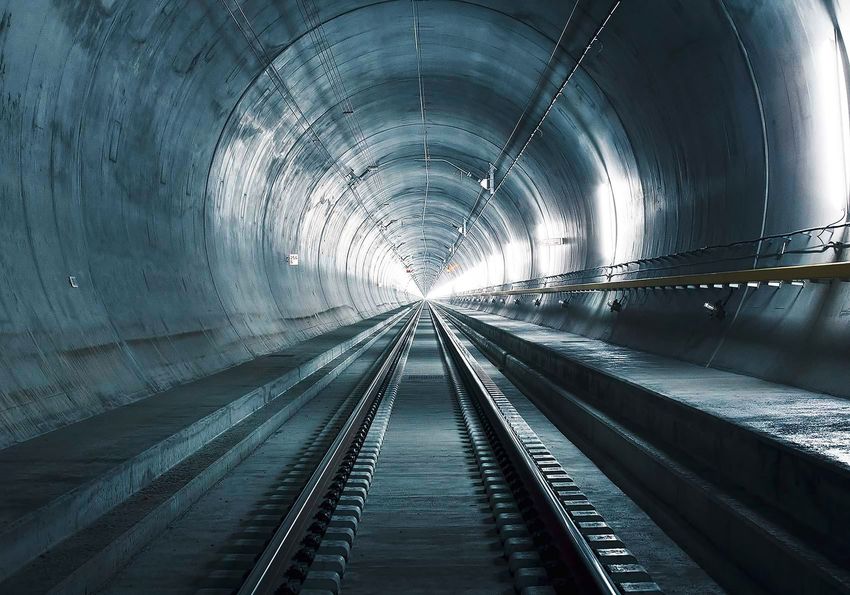Underground tunnels are engineering marvels that connect cities, transport people and goods, and even house utilities. But how do engineers build tunnels beneath rivers, mountains, and urban landscapes without them collapsing? Let’s explore the fascinating science behind tunnel construction! 🚧🔬
1. Why Build Underground? 🌍🏗️
Tunnels offer unique advantages over surface roads and bridges:
✅ Space Efficiency – Saves valuable land in crowded cities 🏙️
✅ Weather Protection – Shielded from storms, snow, and wind 🌦️
✅ Faster Transportation – Avoids surface congestion 🚄
✅ Environmental Benefits – Reduces surface impact on nature 🌱
From subway systems to high-speed train routes, tunnels play a vital role in modern infrastructure.
2. The Science of Tunnel Construction 🏗️🔬
Building a tunnel requires careful planning and advanced engineering to prevent collapses. The process depends on factors like soil type, water levels, and tunnel size.
🔹 Key Construction Methods:
A. Tunnel Boring Machine (TBM) 🏗️
🔸 A giant, rotating machine drills through soil and rock
🔸 Used for subway tunnels, road tunnels, and underwater passages
🔸 Example: London’s Crossrail and the Gotthard Base Tunnel (Switzerland)
B. Cut-and-Cover Method 🚧
🔸 The ground is excavated, and the tunnel is built before being covered again
🔸 Best for shallow tunnels in urban areas
🔸 Example: Many metro systems, including New York’s subway
C. Drill-and-Blast Method 💥
🔸 Explosives are used to break through rock in mountainous areas
🔸 Common in long railway tunnels through hills or mountains
🔸 Example: The Channel Tunnel (UK-France)
D. Immersed Tube Tunnels 🌊
🔸 Pre-fabricated tunnel sections are sunk into a trench underwater and connected
🔸 Used for tunnels beneath rivers or seabeds
🔸 Example: The Øresund Tunnel (Denmark-Sweden)
3. Preventing Collapse: Tunnel Reinforcement 🏗️🛡️
Tunnels must withstand earthquakes, water pressure, and shifting soil. Engineers use:
✅ Lining Materials – Reinforced concrete, steel, or shotcrete (sprayed concrete) 🏗️
✅ Support Beams – Metal ribs or precast segments to hold tunnel shape 🚧
✅ Waterproofing Layers – Prevents leaks and groundwater seepage 🌊
4. The Challenges of Tunnel Construction ⚠️
Despite advanced technology, tunnel building remains risky:
❌ Ground Stability – Weak or shifting soil can cause collapses 🏚️
❌ Flooding Risks – Water ingress can delay construction 🌊
❌ Ventilation Needs – Long tunnels require air circulation systems 💨
❌ High Costs & Time – Tunnel projects can take decades and billions of dollars 💰
5. The Future of Tunneling: Faster & Safer Methods 🚀
Innovations in tunnel engineering are making construction faster, cheaper, and safer:
🔹 AI & Robotics – Smart sensors detect weak points and guide TBMs 🤖
🔹 New Materials – Self-healing concrete and flexible linings improve durability 🏗️
🔹 Hyperloop & Vacuum Tunnels – High-speed travel with minimal air resistance 🚄
🚀 Elon Musk’s Boring Company is working on ultra-efficient urban tunnels for traffic-free transport!
Conclusion: The Hidden Highways Beneath Our Feet 🚇🌍
Underground tunnels are essential for modern infrastructure, allowing fast travel and efficient urban planning. With advanced engineering and cutting-edge technology, future tunnels will be safer, smarter, and more sustainable. 🌱


